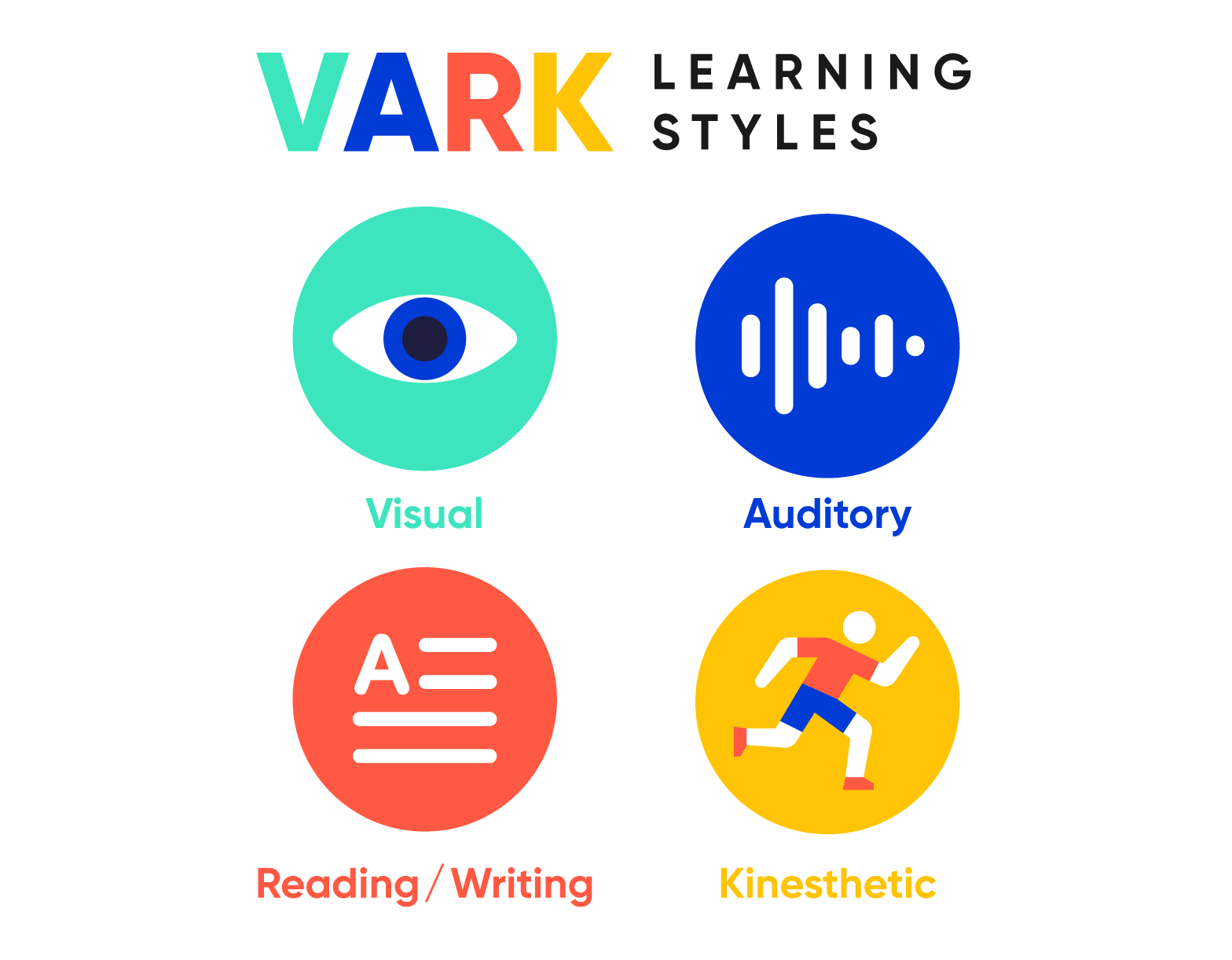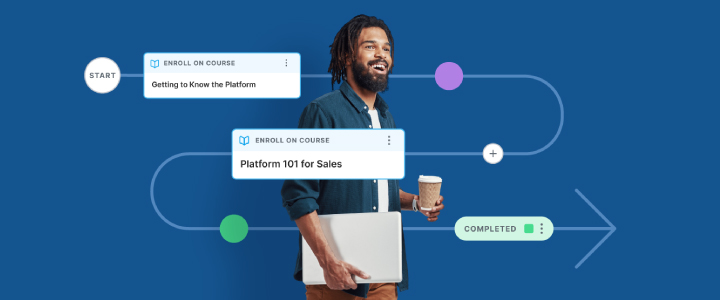
4 min reading time
Multimodal Learning: Engaging Your Learner’s Senses
Most corporate learning strategies start small. Typically, it’s a few text-based courses with the occasional image or two. But, as you gain more learners, and become more confident in your training process, it’s essential to branch out and consider creating courses that embrace different learning formats and ways to learn. This is where multimodal learning comes in.
Used to enhance the learning experience and increase engagement, multimodal learning recommends the use of different modes to train. It’s a helpful methodology to memorize when creating your eLearning content.
What is multimodal learning?
Multimodal learning suggests that when a number of our senses – visual, auditory, kinaesthetic – are being engaged during learning, we understand and remember more. By combining these modes, learners experience learning in a variety of ways to create a diverse learning style.
For example, let’s imagine an organization is onboarding a new sales hire, training them on their product, and has decided to take a multimodal approach. The first part of the course could be text-based, reading an overview document or slides about what the product they are going to be selling does. Then, they’re enrolled in a webinar that visually and aurally explains what the product does. From here, they’re requested to do a ‘sample’ demo via video to get them involved and active in the process. And, finally, they have a feedback session with an instructor to hear about their progress and help them further their learning.
Types of multimodal learning
There are four main methods of multimodal learning; visual, auditory, reading and writing and kinesthetic (VARK). Some experts believe that people prefer one over the other; for example they have a preference for visual learning, however the evidence to back this up is sparse.
That being said, VARK is still a valuable model to keep top-of-mind when trying to create diverse learning content to engage your learners.

1. Visual learning
Visual learning involves the use of graphs, infographics, cartoons and illustrations, videos, artwork, flowcharts, and diagrams – anything that primarily stimulates your learners eyes.
Techniques like color coding information, using different fonts and labelling important points with stickers are all part of visual learning too.
2. Auditory learning
Auditory learning is mostly concerned with what we listen to. For an organization delivering training, this can come in the form of a podcast, webinar, audiobook, or an instructor talking to learners face-to-face. Group discussions or debates on the topics covered can all form part of auditory learning.
3. Kinesthetic learning
Kinesthetic learning gets learners active; it can involve site visits, demonstrations and multimedia presentations. It’s often a combination of several types of learning together; for example, making a video combines visual, auditory and kinesthetic skills; the different methods of multimodal learning don’t operate in a vacuum – they intersect with each other.
If we think back to our sales onboarding example above, kinesthetic learning can be used to test a learner too, as our sales rep had to make a sample demo video as part of their assessment.
4. Reading and writing
Reading and writing – the type of learning we’re most familiar with. Here, text-based courses, PDF’s, documents, books, and eBooks are often used. Additionally, most written exams or assignments, like true and false or multiple choice questions, come under this bracket too.
How to create a multimodal approach to learning
1. Add different media to your courses
The first step with multimodal learning is to simply dive in and plan how you can add more modes to your courses. When you’re creating your course think outside the box and start to use different formats, like video, slides, and audio.
We suggest you start small by repurposing the content you already have and taking advantage of resources outside of your organization, like YouTube videos and podcasts on the subject of focus. From here, you can then start creating your own videos, slides, audio, and interactive learning sessions.
Also, invest in an LMS that supports a wide range of content formats, including Word, PowerPoint, PDF, video and audio.
2. You can use blended learning techniques
Blended learning is an effective training technique that combines face-to-face training with online instruction through your LMS. It gives you all the advantages of interacting directly with learners in a classroom environment along with the convenience of eLearning.
With blended learning, you can hold a live training session with a group of learners, post some extra resources for them to your LMS, and then assign a task or exam to ensure they understood the topic completely. This allows you to easily document and report on who’s taken the training session and how effective it was.
3. Learners can do multimodal assignments
You can take advantage of a variety of different means of assessment when you’re training through multimodal learning. Challenge your learners to create a video or audio project and upload it to your LMS, give them instructions on a personal essay to write and post, or set up a quiz for them to take.
Setting multimodal assignments lets learners get creative, and encourages them to use different parts of their brain. Cognitive Learning Theory suggests that when learners are actively involved in their own learning, they retain more of their training, so multimodal assignments are likely to create better results.
4. Providing feedback through different media with your LMS
Occasionally, it’s not possible for managers to give their teams feedback in person. This may be because some of your team work remotely or are often offsite, or perhaps you have some general feedback you need to provide to a large group and don’t have the capacity to speak to everyone individually.
In this instance, recording a short video and posting it to your LMS can be a great solution. Providing feedback through email is risky, it’s likely to be misinterpreted or misunderstood as the tone is impersonal. With a video, learners can hear your encouraging tone of voice and see your relaxed body language; and they’ll understand that your feedback is constructive and well meant.
Do your training sessions mainly stimulate one or two of the senses, or do you attempt to engage your learners in a variety of different ways? Let us know what works for you in the comments.



